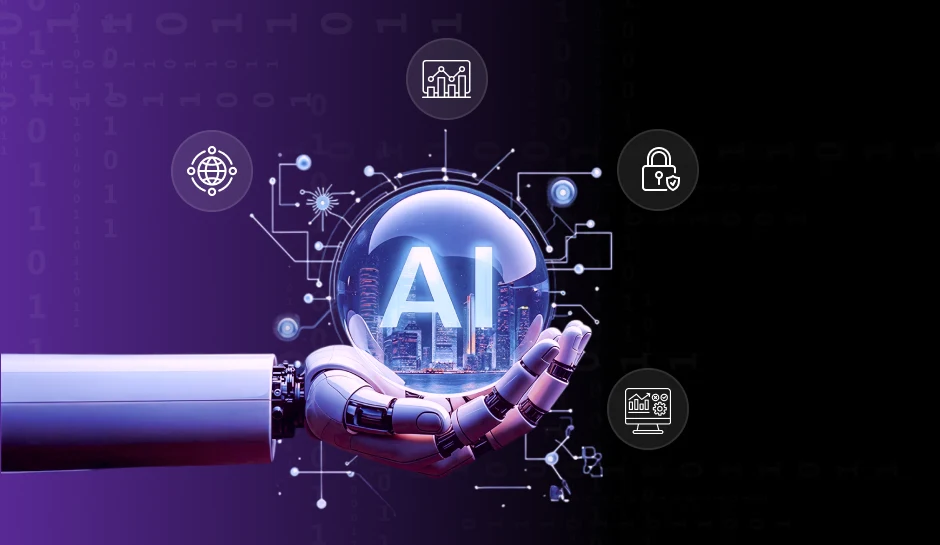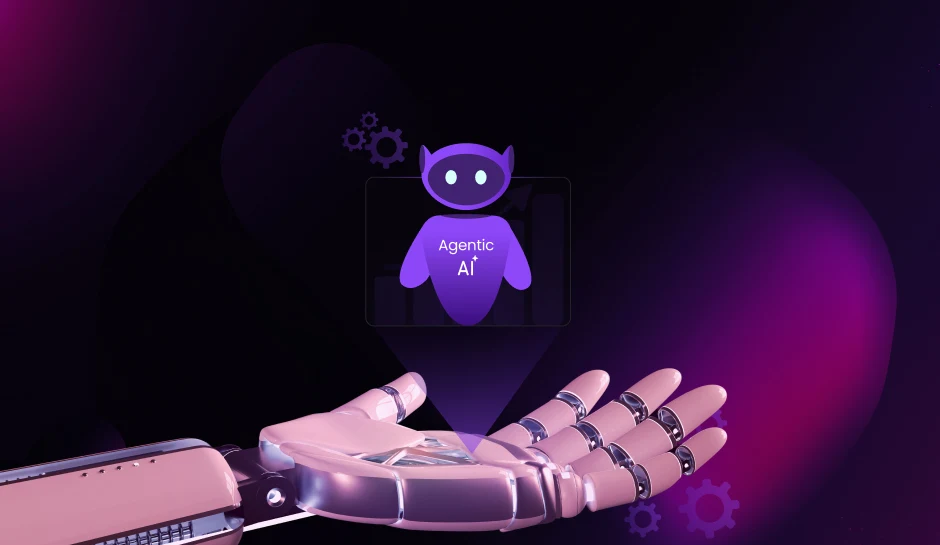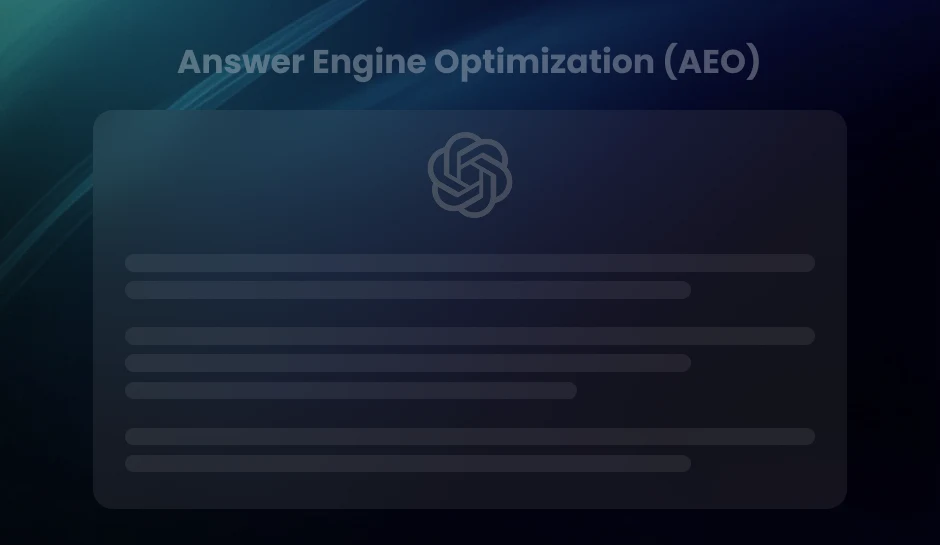What does your brand really stand for—and who is it serving?
In this powerful episode of The Revenue-Focused Marketer, host Hershey sits down with Clarence Bongalos, CEO and Founder of The Maur Company, to explore how branding goes far beyond logos, taglines, and aesthetics. Clarence unpacks how a brand is lived—not just seen—and why employee experience, workplace culture, and internal alignment are the true drivers of lasting customer loyalty.
Together, they discuss what modern branding looks like in a people-first, AI-powered world, and why leaders must stop treating marketing as a tactical cost center and start aligning it with long-term business strategy.
Whether you’re a startup founder, marketing leader, or culture builder, this episode is a must-listen for anyone trying to lead a business with heart, purpose, and measurable impact.
By tuning in to this episode, you can expect to come away with an understanding of:
- Why your brand is defined by experience—not just aesthetics
- How internal misalignment can signal branding problems early
- What it means to treat employees like internal customers
- Why branding, marketing, and customer success need to work as one
- How AI can support (but not replace) authentic brand experiences
- The difference between “marketing big” vs. “marketing little”
- Practical tools like Apollo for sales and brand outreach
- Why emotional resonance and authenticity must emerge, not be forced
Featured Speakers:-

Clarence Bongalos
CEO & Founder, The Maur CompanyClarence Bongalos is a seasoned business leader with 20+ years of experience helping companies create purpose-driven, people-centric workplaces. At The Maur Company, he helps organizations align brand, leadership, and culture to drive both impact and profit. Clarence is passionate about solving the workplace misalignment crisis and building cultures where both employees and customers thrive.

Harshika Chadha
Lead Product Manager – DiGGrowthHarshika is a seasoned product manager passionate about business transformation, design thinking, technology, marketing trends, SaaS security, and human-computer interactions. Her deep interest in the intersection of these fields keeps her at the forefront of industry insights, uncovering success strategies for today’s fast-changing business landscape.
More From Our Content Repertoire
- From Cost Center to Profit Driver: Transforming the Perception of Marketing Why it fits
- Breaking Down Barriers: AI Tools and the Democratization of Data Analysis in B2B Marketing
- How To Become An AI-Ready Organization
Transcript
0:11:
Hello and welcome to another episode of the revenue focused marketer where we discuss anything and everything related to marketing as well as data.
0:20:
I’m your usual host, Hershey, and today I’m joined with someone who really specializes with brand strategy, and he’s also the CEO and founder of the Moore Company.
0:31:
So, welcome to the show, Clarence.
0:33:
It’s so great to have you here today.
0:35:
Hey, Hershey, thanks for having me.
0:37:
I’m really excited to be here.
0:38:
Yeah, thank you for all your time.
0:41:
, just a little bit about Clarence, he’s helped drive purpose-driven companies aligned with their voice, visuals, and values to drive loyalty that really lasts.
0:51:
And this is something like, you know, in the wave of AI and this time that we are in now, I think loyalty is definitely something that is valued a lot.
1:01:
So I think it’s a great time to for us to really chat about this.
1:06:
, maybe let’s start off with the foundations, right?
1:10:
, and maybe by busting a myth, what isn’t branding according to you and why do so many people keep confusing branding with just aesthetics?
1:20:
Yeah, , that’s a really good question.
1:22:
I think that When you think about the history and kind of the legacy of branding and kind of where it started, it really came from this idea of, you know, back in the days, farmers or whatever would brand their cattle or their livestock, right?
1:38:
, or, , artisans who do pottery would sign their work, right?
1:44:
That’s really where the concept of branding came from.
1:47:
So it really came from a place where it was this aesthetic view and perspective.
1:52:
, but in the modern business world that has, you know, evolved over time to really mean more about the experience and the full kind of perspective that a that a customer or an employee or, you know, any person that interacts with your brand, it became about that overall experience, , and we really saw that kind of be Transformed by the introduction of social media, when, you know, the the the world became so much more connected and it became so much more about people’s experiences, , and so that’s where I think we are now today in terms of how we define brand as not just being this aesthetic visual identity, but really about the experience.
2:40:
Definitely.
2:41:
And it’s been such a drastic change, right, from like, I love the example that you kind of shared about how it really started off and like, you know, social media has definitely shifted so much now.
2:53:
I think if you kind of, if your company doesn’t have like LinkedIn or Instagram now, do you even consider them being a legit company?
3:02:
Like that’s a question that people are going to face in today’s world, right?
3:07:
And , let’s dive like, you know, deeper into the meat of today’s topic.
3:13:
How does branding influence customer experience and vice versa, right?
3:19:
Yeah, I mean, you know, when you think about brand again in the modern business world, , you really have to think about it as the primary product of a business, right?
3:30:
Oftentimes I think we think about it as something that we create, we think about it as something that we strategize about in terms of how we want customers to perceive, and that’s true, we do, like there is a whole world of brand strategy.
3:43:
, but really what brand is is this like an outcome of product of really what the difference is between what you’re strategizing, what you’re planning, and what, you know, really comes to fruition and sometimes a lot of it, , is a result of actions that we don’t plan, actions that we don’t intend, it’s more of what happens in the day to day.
4:02:
, and really when we think about brand and customer experience, to me, and the way that I’ve come to understand it, it’s one and the same, right?
4:10:
Like, I think we try to look at them as two independent things that are related.
4:16:
, but to me, the way that I have always defined brand is the customer experience.
4:23:
It’s not about what we try to put together, but it’s what actually happens, what actually becomes.
4:30:
, so it’s a combination really of, you know, the, not just the interactions that people have with your business, , but a lot of other different factors.
4:40:
It’s, it’s what’s happening out in the world.
4:43:
How is that affecting the individual customers’ experiences, that’s gonna affect their perception and how that translates to how they perceive your brand.
4:52:
, so I think it You know, to answer your question, brand is really a culmination of that customer experience.
4:59:
, to me it’s one and the same.
5:01:
Awesome.
5:02:
And do you have maybe like a real life example of a brand that kind of nailed the connection between the brand promise and the actual customer experience?
5:13:
I mean, it it’s probably pretty cliche, but I mean, if you look at Apple, , I think, you know, one of the things that really propelled them as a business is their Think Different campaign.
5:25:
, and they’ve really, you know, stood behind that, , through every step of what they do, like, they’re not really You know, focus on being the first on anything, right?
5:36:
Like we often see this kind of competition between Samsung and Apple and who did it first, but, you know, Apple is a company, they don’t, they don’t really care about that, right?
5:46:
Like they don’t care if they’re the 3rd, the 4th, the 5th to do some feature or whatever it might be.
5:54:
, because to them it’s about thinking different, and that doesn’t mean thinking about something novel.
5:59:
It means really, you know, taking things that maybe already exist and thinking about how to do that better.
6:05:
, and we’ve seen the company, you know, grow significantly over the past, you know, decade or so, , two decades, I guess, and I think that’s because they really deliver on that brand promise that they initiated back in, you know, 2001 or 2003.
6:23:
Yeah, no, definitely that’s like the ideal like mecca for like companies, right?
6:28:
They want to kind of be like Apple, like that’s the vision, and they’re definitely doing it right.
6:34:
So that’s a good one to share for sure, , kind of on the.
6:38:
contrary, what are some early signs that a brand is misaligned with its customer journey?
6:44:
Like, you know, I’m sure you kind of work with clients where you might see this misalignment a lot of the times.
6:50:
So, , what are maybe some early signs?
6:54:
Yeah, I mean, I think, you know, one of the things that brands or businesses need to really kind of shift in terms of their mindset is to start internally.
7:04:
I think when we think about the concept of brand, we, we often think about it as this external feature, , where like, sure it starts inside the company in terms of how we strategize, how we decide what we want to present to the world, , but a lot of what we focus on is, you know, the external perception.
7:24:
But I think in 2025 and really from here with the, you know, proliferation of AI, , we’re really gonna need companies to start within the company and what the internal brand looks like, , because that’s really going to affect everything else in terms of what happens in the external market, right?
7:47:
And so, I think one of the early signs of You know, misalignment and a branding problem is what’s the culture within the organization.
7:56:
, and we’re seeing a lot of people really, you know, pushing on this right now, , at least from the employees standpoint, where We’re seeing this kind of what I’m calling a corporate revolution where people are just leaving corporate world.
8:10:
They’re done with toxic corporate culture, , and they’re going to social media to talk about it, , and all their toxic experiences, and I think that that is a very, very like early but prominent sign of a branding issue, because if you think about it, the, the employees are really your Customers, right?
8:32:
And so if they’re not aligned with what the brand is about, , or if there’s a misalignment between what the brand is promising and what the experience is within the organization, Yeah, that’s your foundation crumbling.
8:46:
So I think that that is the earliest sign of Branding issue.
8:51:
Yeah, and that’s a very unique perspective because when we think of brand, we don’t technically even like, you know, include our own employees a lot of the times.
9:00:
But as you talked about them, like starting internally, that’s maybe the important aspect to kind of include them and make sure that they’re feeling like, you know, they’re part of the brand, getting the same promise that you kind of want to deliver externally.
9:16:
, and let’s talk about, like, you know, tension between marketing led growth and customer led growth.
9:23:
Like, how can they typically support each other?
9:26:
Have you seen cases where there’s tension between the two?
9:30:
Can you elaborate on the question?
9:33:
Yeah, so like, you know, a lot of the times there’s different teams for marketing and for customer success, and they have different visions about, you know, how they want to execute this.
9:45:
So they can sometimes have tension between them.
9:48:
And is that something that you have experienced or, you know, just trying to find out what’s the best way that teams that do face this misalignment can find a solution.
9:58:
Yeah, so I think that that is absolutely something that happens and, you know, a lot of companies today, , and when you think about, you know, sales, marketing, branding, all these facets of marketing and really, you know, you can go beyond that in terms of all the other areas of business, but when you talk about the areas within the marketing department or the marketing discipline.
10:22:
, they all kind of operate in silos, right?
10:25:
Like, and that’s where we see a lot of the misalignment.
10:27:
Like, there’s this age old argument that, you know, sales isn’t marketing, or now what I’m seeing a lot of on social media is people perpetuating this idea that branding isn’t marketing.
10:40:
And so it starts to really separate all these different facets of marketing that have to work together in order to deliver the brand promise.
10:48:
And I think that the fundamental reason for that misalignment is a misunderstanding of the purpose of marketing within the business landscape, right?
10:58:
I think a lot of, especially modern marketers today, look at marketing as a tactical aspect of business versus a a strategic aspect of business.
11:09:
, it’s really this differentiation between, you know, marketing big M and marketing little M, which is the difference between strategic or like strategic long term orientation and then the tactical day to day operational aspect of things.
11:25:
So I think that that misalignment between, you know, customer success teams, marketing teams, branding teams comes from that misunderstanding where, OK, we kind of serve different functions of Marketing or different functions of business, and it becomes very individualized versus having maybe, you know, a a person, whether it’s a CMO, a VP, a director, who is really focused on making sure there’s alignment between those areas of marketing, , so that we don’t, you know, or they don’t risk kind of increasing this chasm of misalignment between each of those areas.
12:05:
Yeah, and I, I also noticed this concept of like branding being even separate than marketing lately.
12:13:
, you’re right, that’s like the newest sort of trend that I’m hearing.
12:17:
What are your thoughts on that?
12:19:
Do you think that’s justified?
12:21:
Are they just like kind of creating more silos than we need today?
12:26:
Yeah, I mean, and to be, to be completely honest, every time I see this on social media or whatever, my, my blood boils, , and I, I, I think that I understand and I respect the argument behind it, , because, you know, branding is emerging as this more holistic aspect of marketing, and I think it’s important to lean into that, to be, you know, a successful business leader or a successful marketer.
12:54:
But when we educate and inform the general public or whatever, that branding isn’t marketing or that branding is this whole separate thing, I think we are just Increasing the, again the chasm of misalignment within the organization and really within the marketing discipline, , when in fact what we need to be doing is reducing that misalignment, right?
13:21:
When we just talk about, you know, marketing as a discipline, I think what we need to be doing as as marketers is to make sure that We’re, we’re not driving.
13:35:
These, you know, areas of marketing apart, if that makes sense.
13:43:
especially when there’s so much misalignment between teams like sales, like, you know, that’s another like I guess one where, you know, people often have some and like the CRO role has kind of become that role that kind of now has to guide both of them and kind of keep the peace between the two.
14:00:
And it’s like it’s, it’s overcomplicated the business landscape, right?
14:05:
Like when we start to really make these siloed departments within the business, it just, you know, the more, the more separation you create, the harder it becomes to manage an organization because when you’re looking at marketing, truly marketing should be the the north star of a business, right?
14:24:
Like, , I, I have this belief that the the Successful business of tomorrow are the ones that have a CMO as a CEO.
14:34:
Because they are looking at, you know, the market in this kind of holistic view, where they’re looking at sales, they’re looking at branding, they’re looking at all these things that marketing looks at, , and when we say things like brand branding isn’t sales or or branding isn’t marketing or sales isn’t marketing, we’re moving away from that.
14:53:
Mhm.
14:54:
Definitely.
14:56:
Yeah, and I, I guess, like, you know, to add on to that, I think it definitely adds to the frustration level that people see, because when you’re so divided, then the thought process and the end goal that you’re Kind of me is completely like you lose touch of that, right?
15:16:
So kind of keeping those, that’s a very interesting point like having the CMO really being in the CEO’s role and kind of seeing that as a holistic market.
15:27:
I also wanted to get your thoughts on like, you know.
15:30:
, a lot of people kind of still see marketing as like the cost center, and that’s the sort of narrative, like, you know, marketers and CMOs are trying really hard to shift from, because, you know, nowadays people want you to think of marketing as an investment.
15:49:
And anytime you talk about an investment, then follow up questions like, what about the ROI, right?
15:56:
So a lot of marketing is becoming more technical.
15:59:
Also in the sense that you don’t just have to deliver certain assets, you’re also responsible as a CMO or like, you know, head of your marketing team to give sort of these, like, you know, parameters and analytics and like things that you’re supposed to kind of look at to ensure that you’re meeting sort of, you know, the right, the company is making the right investment.
16:22:
So what are your thoughts on this sort of evolving space right now when it comes to marketing and it being an investment?
16:30:
Yeah, I mean, I, I, I absolutely believe that it is an investment.
16:32:
I think that that question comes from, again, this over time marketing became this tactical thing, right?
16:41:
Where I think initially the intent for for it as a discipline was it for for it to be strategic.
16:47:
, but because over really the last, say, 20 years or so, the modern idea of marketing became so focused on the tactical aspect of it, and really that was kind of exacerbated by data, right?
17:03:
, and how everything now in marketing can be measured, essentially, .
17:10:
And so, yes, I think that today it’s become a cost center because we have so many channels, you know, more than we ever have.
17:19:
, and we’re, you know, they all cost, right?
17:22:
Like we live in a subscription economy where as a business you maybe back in the day had one or two monthly payments to run your business and now there’s like 20 or 30, , especially for a marketer, you now have, you know, a dozen different subscriptions in order to get different pieces of data that should be talking to each other but don’t.
17:44:
, so I do think that it has become a cost center.
17:48:
, but to your point, we need to emphasize more on the investment aspect of it, and I think that comes from, again, shifting the mindset and really taking a step back and understanding the difference between Marketing Big M, which is the strategic long term view of marketing and marketing Little M, which is the tactical operational aspect of it.
18:13:
And if businesses can’t take a step back and really think about what that means in terms of their business, then it it will always be a cost center.
18:23:
That’s a really good point.
18:25:
Yeah, and I kind of want to talk about like something that’s not avoidable in conversations anymore.
18:32:
.
18:33:
Yeah, you got that right.
18:37:
, but here’s a twist, right?
18:39:
Can AI actually enhance customer experience without compromising the brand and the brand tone?
18:46:
, love to get your thoughts on, like, you know, this aspect.
18:51:
I think I think it can, but I think it’s very, it’s gonna be heavily dependent on , the person who’s leading that businesses or that company’s brands or AI strategy, because I think when it comes to brand, , but really anything in business right now, what we’re gonna see, you know, this year and it really in the next maybe 3 years is this finding this balance between human and AI, , and that’s gonna have, you know, Insane implications when it comes to branding and the customer experience.
19:27:
, but I think it’s possible.
19:30:
I think that it’s just again, a matter of, you know, how we as people make choices in terms of how we utilize AI.
19:38:
Mhm.
19:39:
No, definitely, it’s choice, especially when you’re given so much responsibility with how much you can do.
19:46:
Our choice is really kind of like differentiate and I think there’s a very thin line between like another two.
19:54:
So, it’s definitely an interesting aspect in terms of like what AI can do right now for people.
20:02:
Are there use cases that you’ve seen where AI is like being very effective in marketing that you would recommend like other businesses, but specifically like, you know, , the small and medium size that are still growing and trying to adopt AI.
20:17:
Yeah, I mean, you know, I think the small and mid-size business is really where AIs can have the most significant impact.
20:24:
, I think when we look at, you know, your large enterprises, they’re looking at using AI for efficiency and really to reduce costs, , where they replace, you know, traditional work that has been done by people, , to then, you know, low cost, , systems that can automate the work.
20:45:
, but when you talk about small and mid-size businesses, I think where AI can really make a difference is their ability to do work that they might not have been able to because they don’t have the resources, right?
20:58:
So, , think about AI as, you know, an, an employee that you would have had to hire to support the work that, you know, your, your team is doing, or even really, you know, enhancing.
21:14:
You know, a small business’s ability to think in larger scale, and to, you know, have, you know, product or service iterations and even brainstorming sessions where maybe for a solopreneur, for example, you know, you sit in an empty room by yourself and you’re thinking about the next step in your business and you’re, you know, developing all these different facets of your business, and you don’t have somebody to bounce off of.
21:37:
, but having a tool like AI where you can , you know, pose your ideas, get some feedback.
21:44:
, I think will really help small and mid-size businesses scale differently than we’ve ever seen them do before.
21:52:
Definitely.
21:53:
That’s a super good point that, you know, a lot of companies even miss to touch.
21:59:
They kind of want to compare themselves to bigger companies and think, oh, efficiency, or maybe I’ll get there or like saving some cost, but it’s about being able to do things that you weren’t able to do before.
22:10:
So.
22:10:
That’s a wonderful way to look at it.
22:13:
, another aspect of like, you know, this space of AI is also kind of becoming overwhelming, is what I’m hearing like from a lot of like people, , like specifically business owners.
22:26:
There’s so many tools that are coming out there, right?
22:30:
Like almost every, like, even when you’re sleeping, there’s a new tool thing and so it’s kind of hard.
22:37:
Yeah, it’s kind of hard to stay up to date with, you know, the changes that are happening in this space with the eye.
22:44:
, are there tools that you kind of swear by or you recommend that you’ve used and kind of really seen value in?
22:51:
And are there tools that, you know, you would kind of recommend others to utilize?
22:57:
Yeah, so let’s see.
22:59:
, I, 100% I live by Gemini, but like in my day to day I use that, but that’s basic.
23:05:
Everybody, you know, pushes for chat GPT, but I am a huge Gemini proponent.
23:11:
, but an AI tool that I use a lot right now is a tool called Apollo.
23:16:
And I honestly think that this is a tool that is going to change the game for a lot of businesses.
23:22:
I mean, we talk about small and small and mid-sized businesses, and in the past, , up until, you know, two years ago when Chat GBT was introduced and the AI race began, .
23:36:
Scaling a small business took a really long time because you, you know, in most cases you didn’t have the resources to put together a sales force, , to or really even a marketing team to go out there and sell your business.
23:52:
, but when we have a tool like Apollo, , which are you familiar by the way, with Apollo.
23:58:
I am not I’d love to hear more.
24:01:
So Apollo is a sales prospecting tool, essentially, , there’s other tools out there like Seamless AI I’d say is one of their, you know, bigger competitors, but, , basically what it is is a prospecting tool where you can essentially find contact information for You know, professionals in the business world, , and it’s heavily based on, you know, LinkedIn profiles and things like that, but you can type in, yeah, so you can type in like a company name, you can filter by, you know, revenue size, employee size, like there’s a lot of different parameters that you can filter off of, but you can target the kind of people that you want to get in contact with, , and get an email address, get a phone number, , that is vetted.
24:49:
, so what it really allows businesses to do is kind of surpass what traditionally has been gatekeepers, right?
24:57:
Like before back in the day, you would have to, you know, call in to even get an email address, call in to get in contact with, you know, a higher up or whatever, and this is kind of eliminating that.
25:09:
And when you look at a small business, Who in the past would not have had the resources to get in touch with, you know, decision makers and companies as easily as they do now.
25:20:
It’s a game changer, , because now in one day, I can find contact information for 200 different people, send an email to all those people introducing myself, talking about the problem that I solved, and I saved myself what would have been the cost of, you know, 35, 10 salespeople, but now I’m able to scale.
25:44:
Which I think is crazy.
25:46:
That’s wonderful, yeah, and is this tool free or is it a paid tool that you’ve utilize?
25:53:
Yeah, they have a free version, so I’ve used both Seamless and Apollo, and they’re very similar.
25:59:
Apollo is a lot more cost effective, , they both operate off of a credit credit aspect, , but Apollo’s free version.
26:09:
does have a lot more credits than seamless reversion.
26:13:
, so I think it’s a tool that every business owner should check out.
26:17:
Yeah, that’s an exciting one.
26:18:
I’m excited to kind of check it out myself.
26:22:
And I will say like I, I want to add because I think this is important because when we talk about branding, I think, you know, if we put that in the context of your career, an individual person.
26:33:
You know, and what they’re doing with their professional life.
26:38:
, I think branding also matters there, right?
26:40:
Like how we present ourselves and one of the big problems we’re seeing today is, you know, the labor market is very, very rough.
26:49:
Yeah, and people are finding it difficult to find jobs or to even get interviews.
26:54:
, and when we talk about tools like Apollo.
26:57:
, it’s initially designed as a sales prospecting prospecting tool, but I think that it’s a tool that people can leverage in their career to get in front of people who are hiring, or might be hiring, or maybe not hiring, and really present themselves in a different way, , and really, you know, when, when we talk about, I, I wanted to bring this up because we’re talking about branding, I think it’s an opportunity to brand yourself.
27:24:
Differently than the millions of people who are competing for the same job.
27:30:
, so I just wanted to say that because I think that’s really important for anybody who might be listening who is in a career changing kind of place in their life, you know, in this sort of uncertainty, it’s kind of nice to be able to have tools that can really help you.
27:50:
So that’s a really good use of a sales.
27:52:
I, I couldn’t have thought about it, so that’s a good one.
27:56:
Thank you so much for sharing that.
27:58:
.
27:59:
That’s a good talk about AI and you know, kind of the space that we are in right now.
28:05:
I kind of want to bring back to like, you know, a lot of times, brands, there’s like this emotional ah driven sort of, you know, feel to it that kind of keeps people coming back.
28:17:
Mhm.
28:18:
So how do you intentionally build emotional resonance into a brand?
28:23:
Is that something that you work with any experience in that space?
28:29:
I wouldn’t say that I’ve ever intentionally tried to build an emotional resonance, , like I was saying at the beginning of the show, brand is really a product of a lot of things that we can’t control, right?
28:44:
Like strategy and kind of this intentional branding is one aspect of branding.
28:50:
, and the rest of it, like I’d say 80/20, right, like 80% of it is a result of things outside of our control.
28:59:
It’s what actually happens once we put the strategy out there, right?
29:03:
, and emotions are one of those things.
29:06:
It’s not something that I believe we could really influence, like, I think we maybe could in, you know, a small way, , but ultimately there’s a lot of Factors that come into play in terms of emotion that we can’t control.
29:22:
, and I, I also think it comes back to the topic of authenticity, , which is something that’s gonna come up a lot, you know, in the age of AI, , and when we are, you know, trying to influence a certain emotion, I think we start to dive into the authenticity aspect of branding, , and so, you know, to answer the question, I don’t, from a strategic standpoint, intentionally.
29:48:
Try to create emotional resonance.
29:52:
Mhm.
29:52:
No, that’s a good point, and I also really like that you kind of chimed in upon the authenticity.
29:58:
I think that’s definitely something that’s, you know, being able to now, , customers can use that to distinguish between, you know, which brands they want to kind of work with or move forward with, because even though AI is doing a great job, it’s kind of come gonna come down later to like, you know, who’s being more authentic, who can really kind of, you know, keep the promise that they kind of signed up with their brand.
30:26:
And sometimes AI might not be able to kind of fulfill the criteria.
30:30:
So that’s where, you know, the human touch can really the personalization aspect, that’s where it can kind of really make a difference, I think.
30:39:
Yeah, and I think that’ll be interesting because I mean, if you think about us as people, we already struggle with the concept of authenticity, right?
30:47:
And then you throw something like AI into the mix.
30:50:
And what does authenticity really mean in in that in that age?
30:56:
and I think that’ll be interesting to see how that unfolds, especially in terms of how it affects branding.
31:04:
Definitely.
31:05:
Cause I think about, sorry, think about like the M dash, right?
31:08:
Like this whole argument about the M dash and how people see it and they immediately think AI and then, you know, that this creates this cascading effect of do I trust this brand because they’re probably using AI but MAS is something that has been around forever and if you are somebody who, you know, is good with grammar and writing.
31:30:
is one of your secret superpowers, but now it it completely redefined, you know, trust and authenticity in terms of your the.
31:43:
Like anytime you want your AI to sound authentic, you just remove all the, which is, you know, it’s really interesting to look at that, you know, as a study because again, like, you’re looking at something so simple as the M dash, but if you Really take a step back and try to understand what that is implying in terms of how people are reacting to it.
32:07:
It’s really influencing trust, it’s influencing branding, , and it’s crazy to really look at the implications of that little thing.
32:16:
Yeah.
32:18:
Who would have thought it would be, you know, distinguishes people and kind of builds that trust or the trust if you’re kind of using it.
32:29:
It’s a great thought.
32:30:
We’re kind of coming towards the end of our session here today, but what excites you the most about, you know, the next couple of years of being in marketing and branding and customer success, like, what’s something you’re looking forward to?
32:46:
I, I mean, I, I hate to say it because it’s what everybody is looking for.
32:50:
Well, I wouldn’t say everybody cause some people are, you know, still fairly afraid of it, but to me it’s really, you know, kind of what I referenced back at the beginning of the show is the balance between AI and You know, the human aspect of things, and I really, you know, built my com my company, the Moore Company, on the notion of, you know, building human centric workplaces, , and that was propelled by what we, what was really initiated by the COVID-19 pandemic, where, you know, we were put into isolation.
33:24:
And really for, you know, a couple years, we were forced to re-evaluate our lives, our careers, , and our purpose.
33:35:
And I don’t think that we have yet Process that.
33:40:
Like we’re just barely starting to see the true effects of that, right?
33:44:
Like with the great resignation and 4 million people a month, like leaving and quitting their jobs to reevaluate life.
33:51:
I think we’re just now seeing that, and then now we throw AI into the mix, where we’re talking about things like AI replacing jobs and AI replacing people, and I think that that is significantly exacerbating.
34:04:
That problem of, you know, what’s my purpose?
34:07:
What what am I doing with my life?
34:09:
, and that’s gonna be really interesting.
34:11:
So I think we need more companies who are focused on the human conversation.
34:16:
Mhm.
34:17:
Within the context of AI, but also by itself, like, really Redefining or, you know, creating different foundations in terms of what it means to be, you know, a human in the workplace.
34:31:
, and so, you know, to answer the question, that’s what I’m really excited to see unfold and, and a little bit afraid.
34:38:
A little bit, , but excited because I think, you know, we’ll, we’ll rise up to the occasion at some point, , and it’ll be exciting to see what kind of transformations that that comes up with.
34:51:
Yeah.
34:52:
Wow, , this has been such an amazing conversation, and I, I know I have learned a lot here today, so I’m sure our listeners will do.
35:02:
So thank you so much for joining us today.
35:05:
It’s very clear that, you know, brand isn’t just a logo or a tagline.
35:10:
It’s the entire relationship between a business and its customers and, you know.
35:14:
Also, its employees, which I learned today, right?
35:18:
So, , for people that kind of, you know, want to get in touch with you, learn more about your brand, where can they really reach out to you?
35:26:
Yeah, , our website, the Moore Company.com, that’s more spelled M A U R.
35:31:
, is a good place.
35:32:
We have our contact form in there.
35:34:
, and then LinkedIn is also a really good place.
35:38:
I’m very, you know, active on there.
35:40:
, so connected me there, send me a message.
35:42:
I love connecting with people and talking about things like this, , cause I think it’s gonna be really exciting to see what and how this unfolds over the next couple of years.
35:50:
So, reach out and connect.
35:53:
Awesome.
35:54:
Thank you so much for your time today and also thank you to our listeners, , for, you know, kind of staying on, listening to all the wonderful speakers that we have.
36:04:
And if, you know, you’re building a brand that kind of goes beyond the funnel, I think This episode’s definitely a must share, so do tell us your reviews, and until next time, just keep building amazing brands that last and, you know, stay thoughtful as well as curious in the space of marketing.
36:23:
So, thank you so much.
36:25:
Yes, thanks, Hershey, and thanks everybody.




